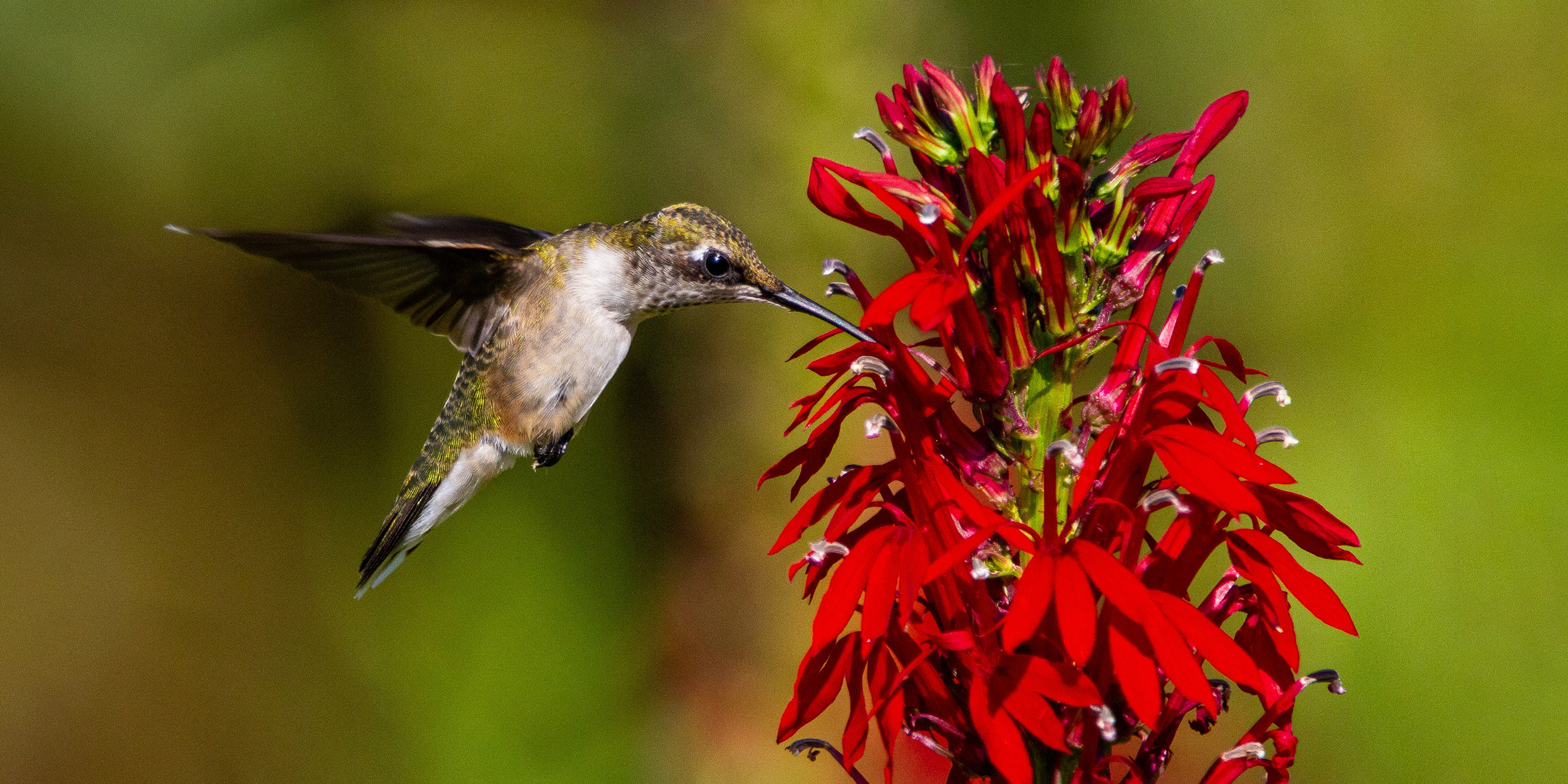Originally published 19 September 1994
My field guide calls the cardinal flower “bright red.” Those simple words inadequately describe the cardinal flower’s electric presence in the ditch. Scarlet? Vermilion? Not enough pizazz.
Call in the people who invent the names on paint chips. Valentine. Stoplight. Chili Pepper. Red Ridinghood Red.
None other of our wildflowers is so conspicuously colored. Thoreau referred to the cardinal flower’s “red artillery.” On another occasion he was reminded of the scarlet of sin.
I’ve been watching a colony of cardinal flowers for a dozen years, one of only two I know about in the neighborhood. Its population has modestly waxed and waned, teetering on the brink of local extinction. This year I count 16 plants spread out along 50 feet of drainage ditch.
In his journal, Thoreau describes a ditch jam-packed with the plants, 10 to the square foot, four or five thousand in all, like an advancing rank of redcoats. My colony is more ragtag, like a shattered troop of British regulars straggling home from defeat at Lexington. Still, it enlivens the late summer with its flintlock flash of crimson.
The cardinal flower is a North American native. Early explorers of Canada admired the plant and shipped it home to France and England, where it became a garden favorite. Its Latin name, Lobelia cardinalis, derives from a Flemish botanist named Matthias de l’Obel. The l’Obel family name came from the white poplar or “abele” tree, so we have a name migrating from a plant to man and back to a plant. “Cardinalis,” of course, refers to the color worn by princes of the Roman Catholic church.
Blue is a more common color among our late-summer wildflowers; yellow and white yet more ubiquitous. Still, as Thoreau noted, a little cardinalis goes a long way. My 16 plants announce their presence from far off, standing out among their massed green neighbors with princely ostentation.
Green is the color of livelihood. The pigment that colors green plants — and therefore much of the planet — is chlorophyll, a chemical that harnesses sunlight and channels its energy into substances that provide food for all life on earth. Green, for plants, is nine-to-five, nose-to-the-grindstone, earning one’s keep.
Red is the color of reproduction.
And from the gaudy, party-hat look of it, the cardinal flower appears to be having fun.
With pools of nectar at the base of deep-throated blossoms, the cardinal flower is adapted to pollination by long-beaked hummingbirds and daytime moths with extended mouthparts. I’ve never seen a hummingbird or moth near my colony, but someone must be visiting. The blossom is ingeniously designed to insure that a visitor moves some pollen about.
Perfectly positioned above each nectar-filled tube is an overhanging flower-part that goes through two stages, first male, then female. As a hummingbird or moth arrives to feed at a flower in the male stage, its forehead is dusted with pollen by a little white brush. When it then goes to a flower in the female stage, the pollen is transferred to a sticky purple pad.
The cardinal flower needs winged creatures to bring pollen grains and eggs together. And without plants, hummingbirds and moths are unable to tap into the sun’s energy. It’s a trade-off: I’ll scratch your back, you scratch mine.
We’re all part of it, this web of interdependence, up to our necks in it. Environmentalists preach the need of species preservation. Climatologists insist that even the weather depends upon the continuance of the balance of nature. Geologists tell us the air we breathe is a delicate exhalation of the seamless web of life. No species is expendable, they say; we are bound together by our mutual need.
But sometimes it takes a kick in the head to make it sink in. Like that little pollen-tipped forehead brush of the male cardinal flower, the sticky pad of the female flower — and the hummingbird.
Of course, not all plants require birds or insects to complete their sexual transactions. For hundreds of millions of years, plants relied almost exclusively upon wind and water to unite the male and female germs, with perhaps some catch-as-catch-can pollination by animals. Then, about 100 million years ago, in the era called the Cretaceous — not so long ago on the geological time scale — plants evolved advertising. Colored blossoms shouting “Here I am!”
Fossils tell the story: Suddenly, magnolias are blooming among cone-bearing pines and flowering sassafras among the ferns, bright-hued additions to a world of brown and green. Like fur and feathers, the notion of flowers seems obvious once we have it, but who could have imagined it before the fact?
It’s no accident that I’m powerfully drawn to the 16 cardinal flowers strung out along the ditch. The whole point of their “see- me” color is to attract attention, a purpose perhaps not altogether different from that of their scarlet-clad ecclesiastical eponyms.
Alas for the flowers, my dietary needs and mouth parts are not adapted to spreading their pollen. For that they need hummingbirds or moths also drawn to blossoms of siren-screaming Fire-engine Red.



